Looking for a colorful houseplant to add to your collection? If you’re not familiar with the genus Aglaonema yet, you’re in for a treat! These tropical plants have been extensively selectively cultivated to create a rainbow of different colors and patterns. Almost all are easy to grow and suitable for beginners.
Let’s have a look at everything you need to know about Aglaonema and how to grow this classic houseplant indoors!
| Common name(s) | Chinese evergreen |
| Scientific name | Aglaonema sp. |
| Family | Araceae |
| Height and spread | 2 1/2 feet high and 3 feet wide |
| Light | Bright indirect |
| Soil type | Moisture-retaining but well-draining |
| Water | Let top of soil dry out |
Disclosure: If you shop from my article or make a purchase through one of my links, I may receive commissions on some of the products I recommend.
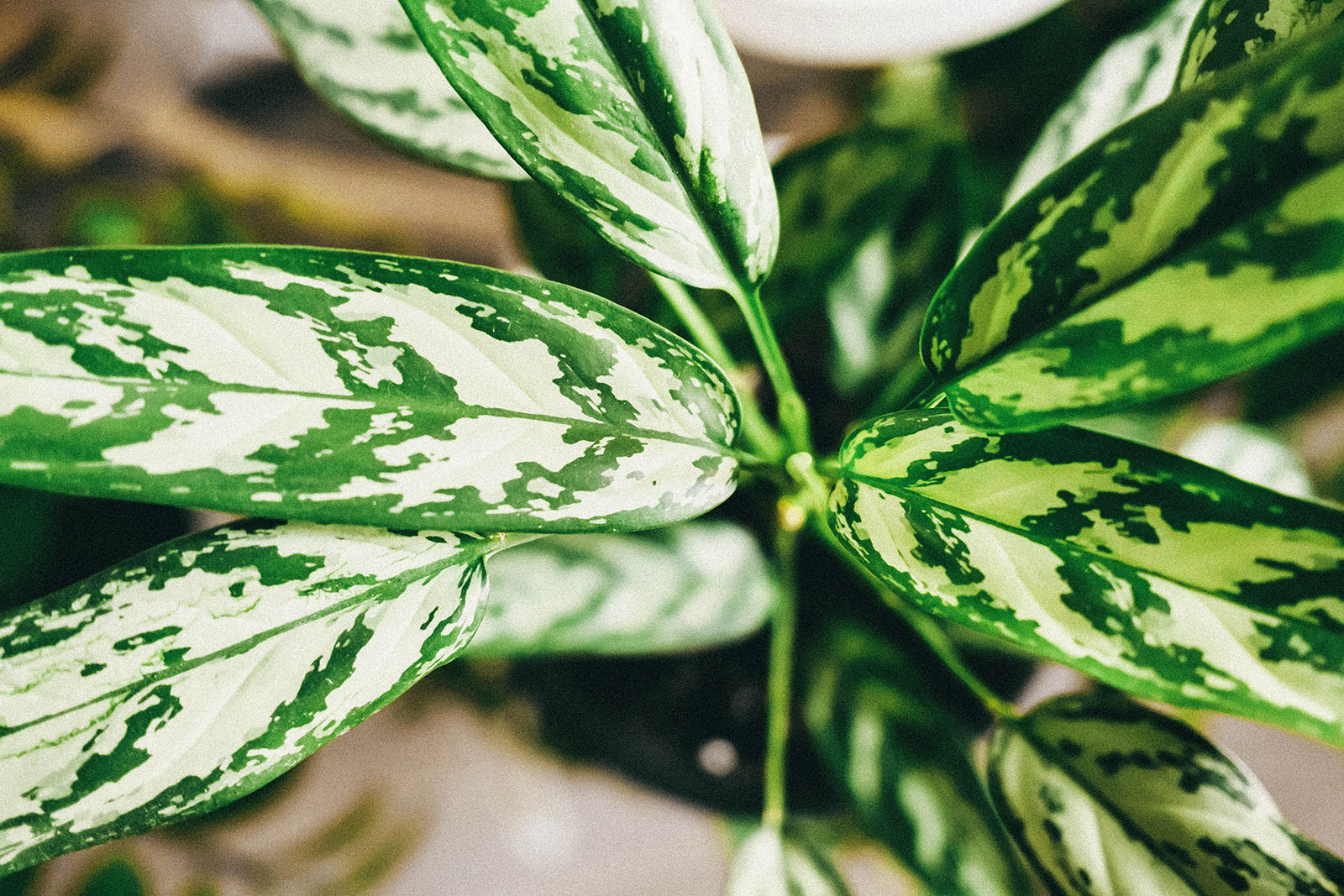
About Aglaonema
Description
Aglaonema, also known as the Chinese evergreen, is a genus of classic houseplant species that’s beloved worldwide for its colorful, patterned leaves and easy care. You may have seen these in shops or offices, since their low light needs and relatively unfussy nature make them great for public spaces.
It’s difficult to give much of a description of this plant, because as discussed below, there are hundreds of cultivars out there. All have slightly different colors, markings, leaf shapes, and other characteristics.
Maximum sizes vary as well, with some plants never growing much taller than a foot high and wide, while others will get significantly higher and spread vigorously if you give them the chance.
Still, all Aglaonemas have certain things in common. They’re aroid plants from the family Araceae with cane-like stems and lanceolate leaves. Varieties sold as houseplants sport colors like classic green, silvery, cream, pale to neon pink, orange-pink and even yellow.
Chinese evergreens occasionally bloom in the home, although their flowers aren’t much to look at. They’re classically lily-like, with a greenish spathe and white spadix. This is common among most other aroids (such as Alocasia ‘Black Velvet’, Monstera Siltepecana, and Philodendron Gloriosum), which are grown for their foliage rather than their flowers.
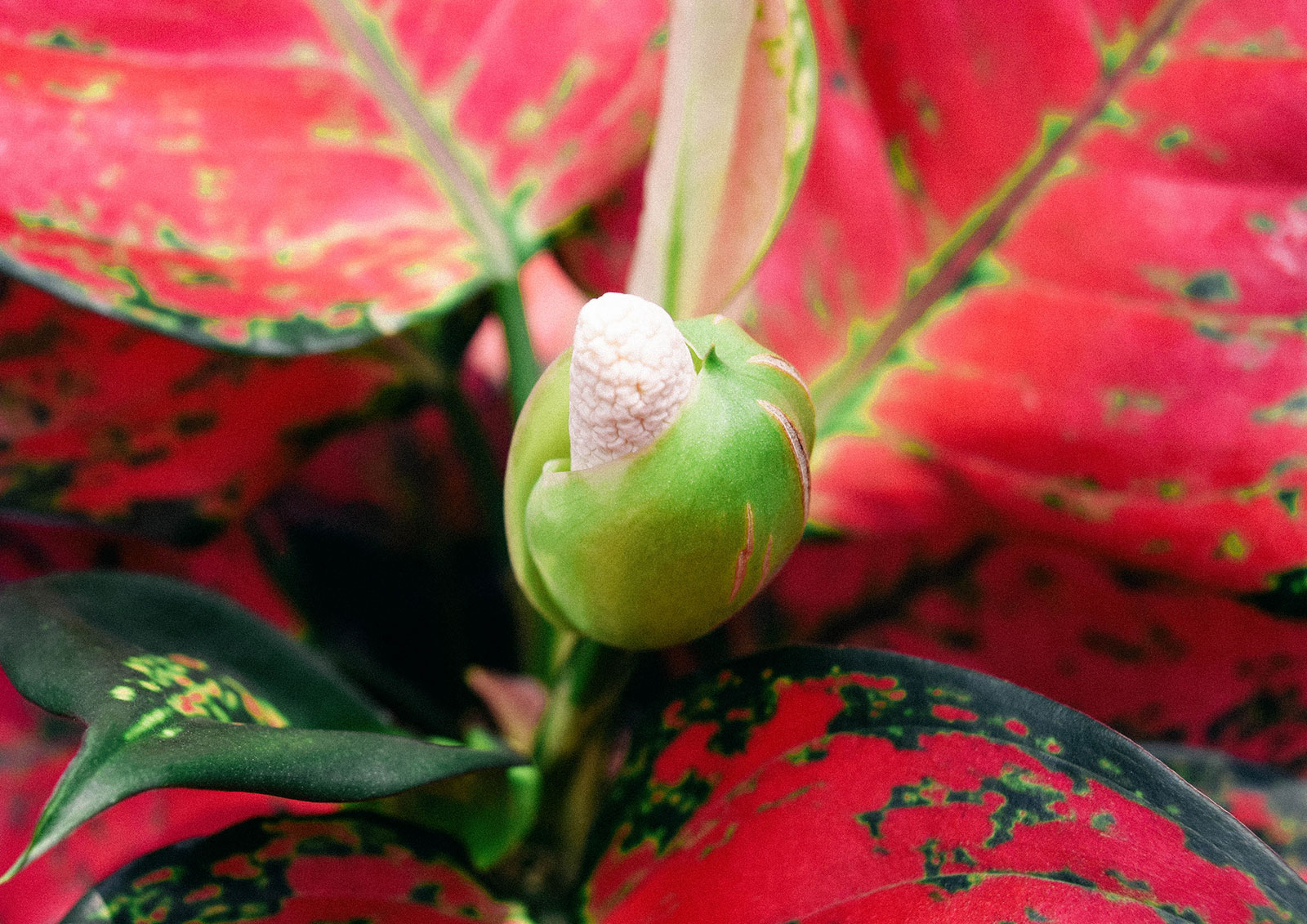
Natural habitat
All of the species in the genus Aglaonema are naturally found in Australasia, as far west as India and as far east as Papua New Guinea. Quite the spread! Of course, some of the species occur in China, hence the popular common name of “Chinese evergreen”.
In their natural habitats, Aglaonemas generally prefer warm, forested regions characterized by high humidity and relatively scarce light. They form part of the undergrowth.
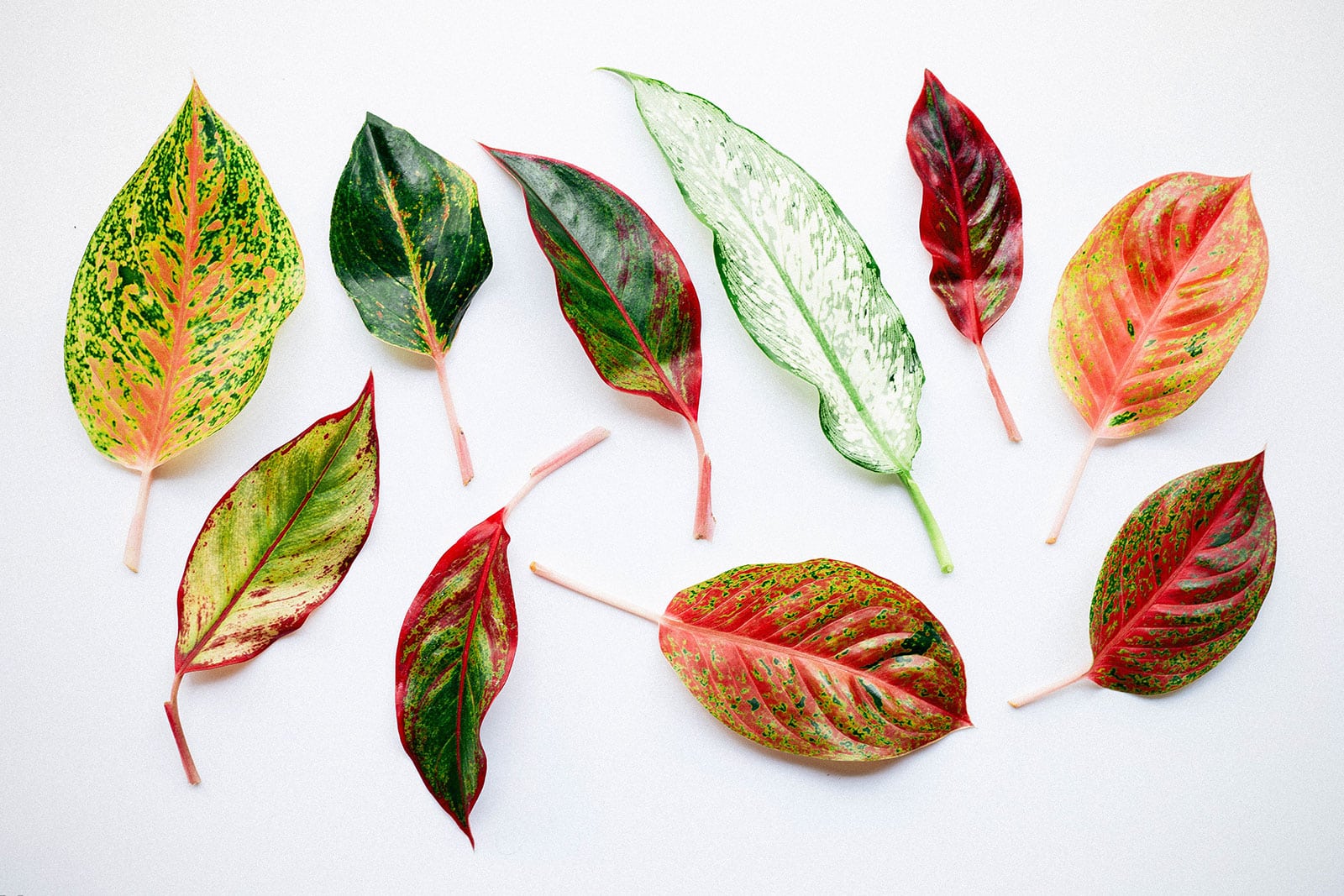
Aglaonema varieties
Aglaonema is a genus containing around 20 different plant species, which explains why there are so many different varieties out there. Lots of hybridizing opportunities! Not all Chinese evergreen species are commonly grown as houseplants, though.
Although you’re unlikely to find the “pure” version of any of these, the most common Aglaonema species in horticulture include:
- Aglaonema commutatum
- Aglaonema modestum
- Aglaonema simplex
- Aglaonema rotundum
- Aglaonema nitidum
- Aglaonema philippense
By crossing (hybridizing) and selectively cultivating the species above, nurseries and hobbyists have created a staggering number of Aglaonema cultivars. Things started picking up in the ’60s and ’70s, and now there are hundreds, if not thousands.
You can find a (non-exhaustive list) of my personal favorites over in this article on Aglaonema varieties. Just don’t look if you’re prone to impulse-buying houseplants, as some of these will definitely make your hands itch!
Where to buy Aglaonema plants:
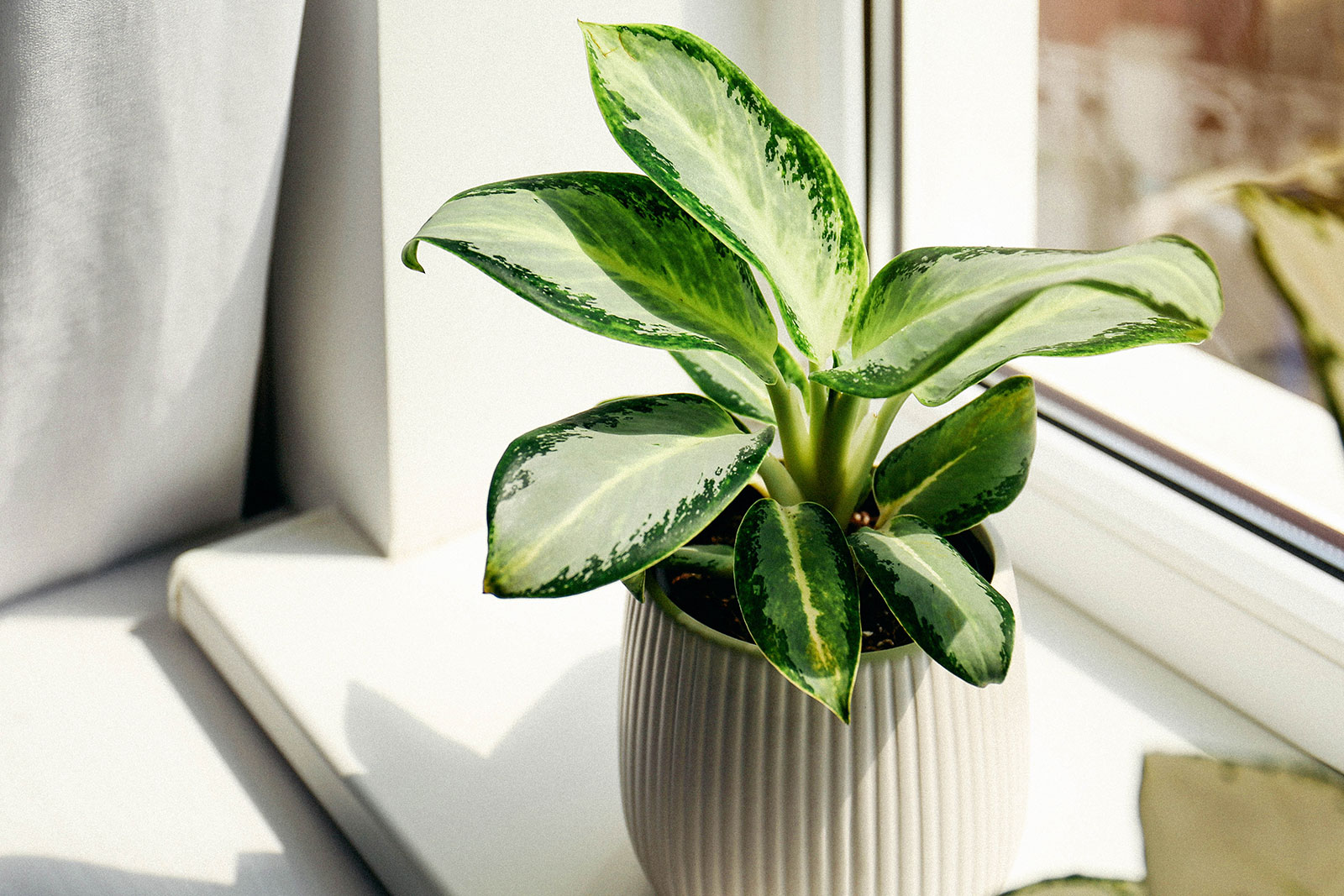
Caring for Aglaonema
Light and temperature
Like other tropicals that call the tropical forest their home, Chinese evergreens like plenty of light, but they don’t deal well with being exposed to harsh sun.
After all, taller trees block out much of the direct light in their natural habitat. The ideal spot for yours is one where it receives bright but indirect light. Most windowsills will be just fine.
You can also grow Aglaonemas under artificial light. Plant grow lights are a great option if you have no windowsill space or if you’d like to grow your houseplants in something like a terrarium or humidity cabinet, which this species is a prime candidate for.
Water and humidity
Tropical houseplants like this one can be a bit confusing for beginning houseplant enthusiasts in terms of watering. They love plenty of moisture, but they really dislike standing in water for extended periods of time. In fact, wet feet can quickly lead to root rot.
(The exception is if you grow an Aglaonema hydroponically—in which case, it’s a plant that grows happily in water, no soil needed.)
Don’t worry, though; with a combination of proper drainage (see the next paragraph) and learning to recognize over time when your plant is thirsty, you’ll do fine.
First off, it’s important not to water on a schedule, instead keeping in mind that your Aglaonema likes its soil lightly moist. You can let the first inch or two of the soil dry out during summer, while during winter, it’s fine to let it go up to halfway dry before watering again.
How soon your Chinese evergreen is ready for more water depends on environmental conditions like light, temperature, and soil consistency.
If you’re not sure, just stick a finger into the soil to gauge the moisture level! If it still feels damp, you can wait a bit longer. You can also pick up the pot: If it feels significantly lighter than just after watering, that means the soil is dry and you can water.
As for humidity, Chinese evergreens aren’t as fussy as some other houseplants. Still, they won’t thrive if your home gets very dry, which can happen during either winter or summer depending on your climate. A cheap humidity meter can help you monitor things.
If the air moisture level is consistently lower than 40 percent, your Aglaonema and other houseplants will likely benefit from the use of a humidifier. And so will your own sinuses, so it’s really a win-win!
Soil and planting
Generally speaking, Aglaonemas aren’t too fussy about their soil. The most important thing is to use a medium that drains well, combined with a planter that has a drainage hole in the bottom. This allows excess water to flow from the pot freely, preventing soggy soil and vastly lowering the risk of deadly root rot in your plant.
You can plant your Chinese evergreen in a store-bought aroid soil mixture, but I’ll admit these can be a bit pricey. Luckily, it’s easy to mix a suitably chunky soil yourself. An example of a good Aglaonema soil would be:
- 3 parts potting soil
- 1 part perlite
- 1 part fine orchid bark
The potting soil in this mixture helps retain some moisture, while perlite and bark allow the excess to drain and air to reach the plant’s roots.
If you feel the mixture dries out too quickly, you could consider adding some sphagnum moss to retain a little more water. If the soil stays damp for too long, on the other hand, you can increase the perlite or orchid bark amounts.
Recommended products for Aglaonema care:
- FoxFarm Ocean Forest Potting Soil
- Perfect Plants Organic Perlite
- Better-Gro Orchid Bark
- Better-Gro Orchid Moss
Fertilizing
Because Chinese evergreens are pretty good growers during the active spring and summer months, they do appreciate a bit of fertilizer from time to time. It just helps keep them going, especially if it’s been a while since you last repotted and the soil nutrients have been depleted. You can use a liquid houseplant fertilizer while watering on a monthly basis during the growing season.
Don’t use fertilizer during winter, if your plant is not growing or if your plant isn’t doing well. The excess nutrients can end up causing root damage if you do.
Recommended fertilizers for Aglaonema:
- Maxsea All-Purpose Seaweed Plant Food
- Houseplant Resource Center Liquid Fertilizer for Houseplants
- Instant Biologics Instant Plant Food (Fizzing Nutrient Tablets)
Pruning
As with similar tropical plants, one nice thing about Aglaonemas is that you don’t have to do much pruning on them at all. If a bottom leaf dies off, which is normal unless it happens at a worrying rate, you can leave it on the plant until it’s crispy. This way, it can reabsorb the nutrients from it, which should help contribute to healthy new growth.
If your Aglaonema does grow too large and unwieldy for you, head over to the section on propagation to find out how you can make it smaller while also obtaining a brand new plant.
Dividing or repotting
Has your Aglaonema grown to the point of needing an upgrade in terms of space? First off, good job! You must be doing something right.
Come next spring, you can choose to either repot the entire thing into a larger container, or turn it into two smaller plants. You’ll find a guide on the latter option in the paragraph below.
If you’d like to keep your plant whole and opt for repotting, choose a planter that’s about 2 inches larger than the current one. Gently take your Aglaonema out of its pot, wearing gloves if you have sensitive skin. Give it a shake to loosen the dirt around the roots and pop it into new, fresh soil.
Your plant can look a bit wilted for a week or two after repotting due to the shock, but it should perk right back up once its fragile hair roots have had the chance to regrow.
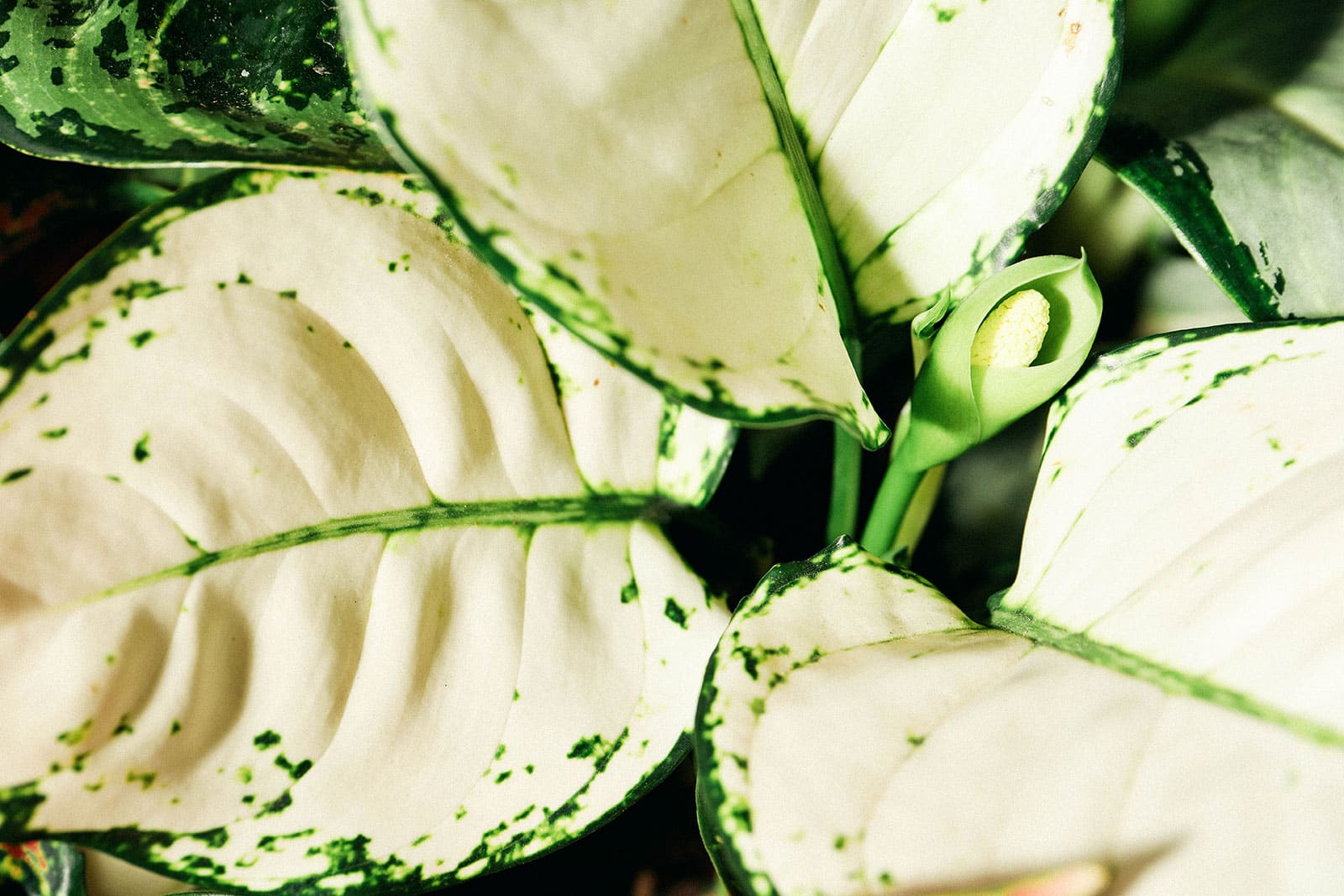
Propagating Aglaonema
Chinese evergreens are one of those houseplant species that are perfect propagation candidates. You can pretty much chop ’em up every which way and they’ll regrow!
If you’d like to turn one Aglaonema into multiple Aglaonemas using nothing but a little simple botanical magic, here’s how you do it:
Division
This is the easiest method, since it doesn’t usually require making any significant cuts. If your Chinese evergreen consists of multiple shoots, just take it out of its planter and loosen the soil.
At this point, any offsets may already start coming loose by themselves. If they don’t, you can carefully separate their connection to the mother plant using a clean knife or pruning shears.
Place everyone in their own containers with fresh soil, and you’re done! Because the new plant(s) you separated will already have their own root system, they should continue growing just fine.
Stem cuttings
Stem plants like Aglaonema will have nodes on their stems: small bumps that have the capacity to produce roots or leaves. We can leverage this ability in order to multiply them.
For example, if you “behead” your Chinese evergreen and place the top in water, it will sprout roots. You can then replant it, and it will continue growing as a brand new plant. The headless mother Aglaonema will resprout a new top from one of her nodes (or sometimes decide to produce new shoots from the soil), so she will be fine as well.
You can also opt to take things even further if you’d like multiple new plants. After you take the top off your Aglaonema, try cutting up more of the mother plant’s stem, taking multiple sections of at least around 2 inches of length. These can be placed into a mini seed starting greenhouse or even just a plastic baggie.
Add some damp sphagnum moss and place the whole thing in a bright and warm spot. Each stem section can sprout roots and leaves, eventually growing into a whole new plant!
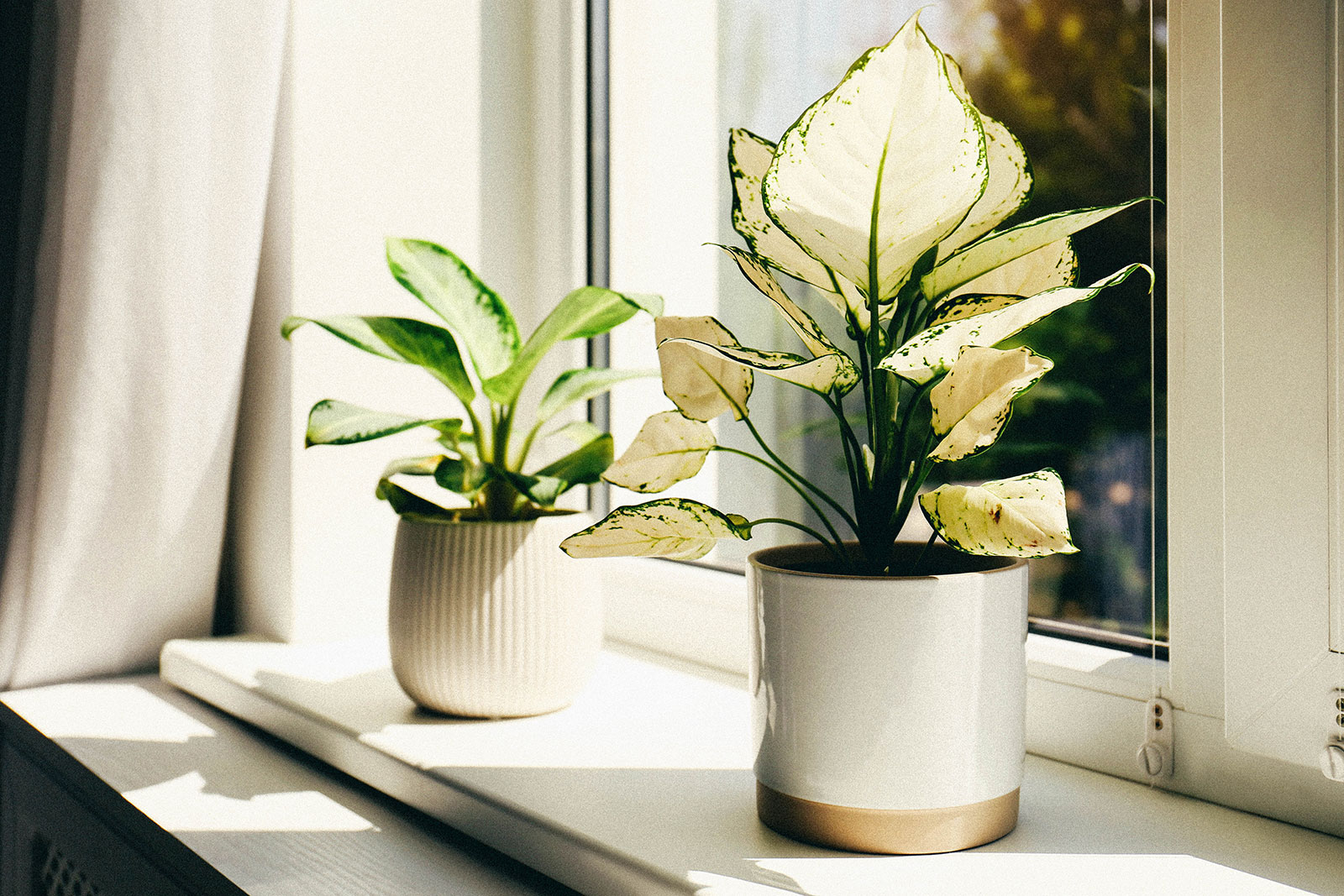
Is Aglaonema toxic to cats and dogs?
Chinese evergreens, like other members of the aroid family, are considered lightly toxic to cats, dogs, and humans. They contain calcium oxalate crystals, which are microscopic but very sharp, and can cause irritation.
There’s no need for panic if your furry friend eats a few leaves, but you should offer plenty of water and keep an eye out for swelling in the mouth and throat.
View the Web Story on Aglaonema plant care.


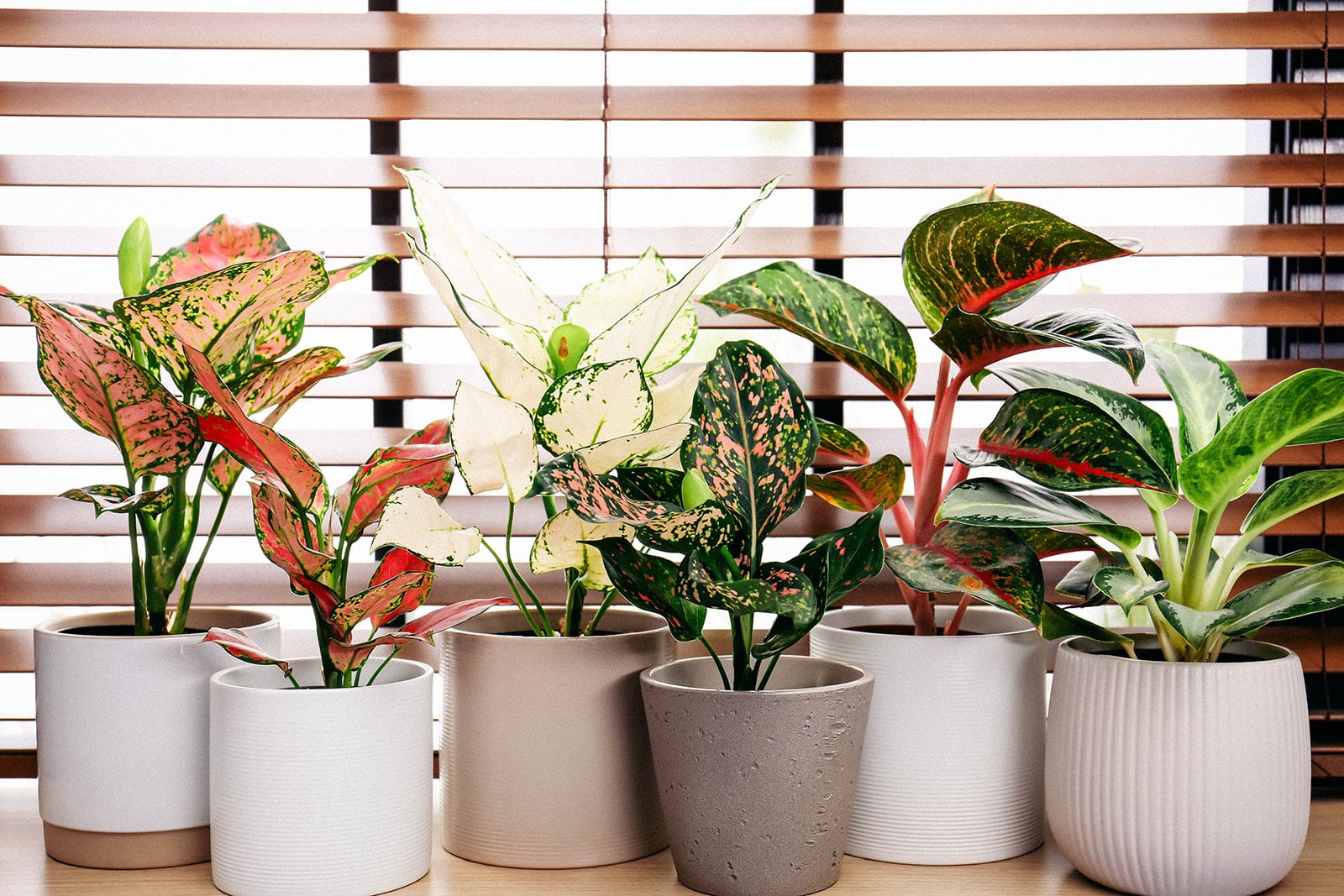













For many years I’ve been pleased with Chinese Evergreen plants . Now I have 1 that is doing very well ,but in recent months I’ve noticed a sap or liquid forming at the tip of the leaves. It stains the wood table and no where do I read about this. Can you enlighten me?